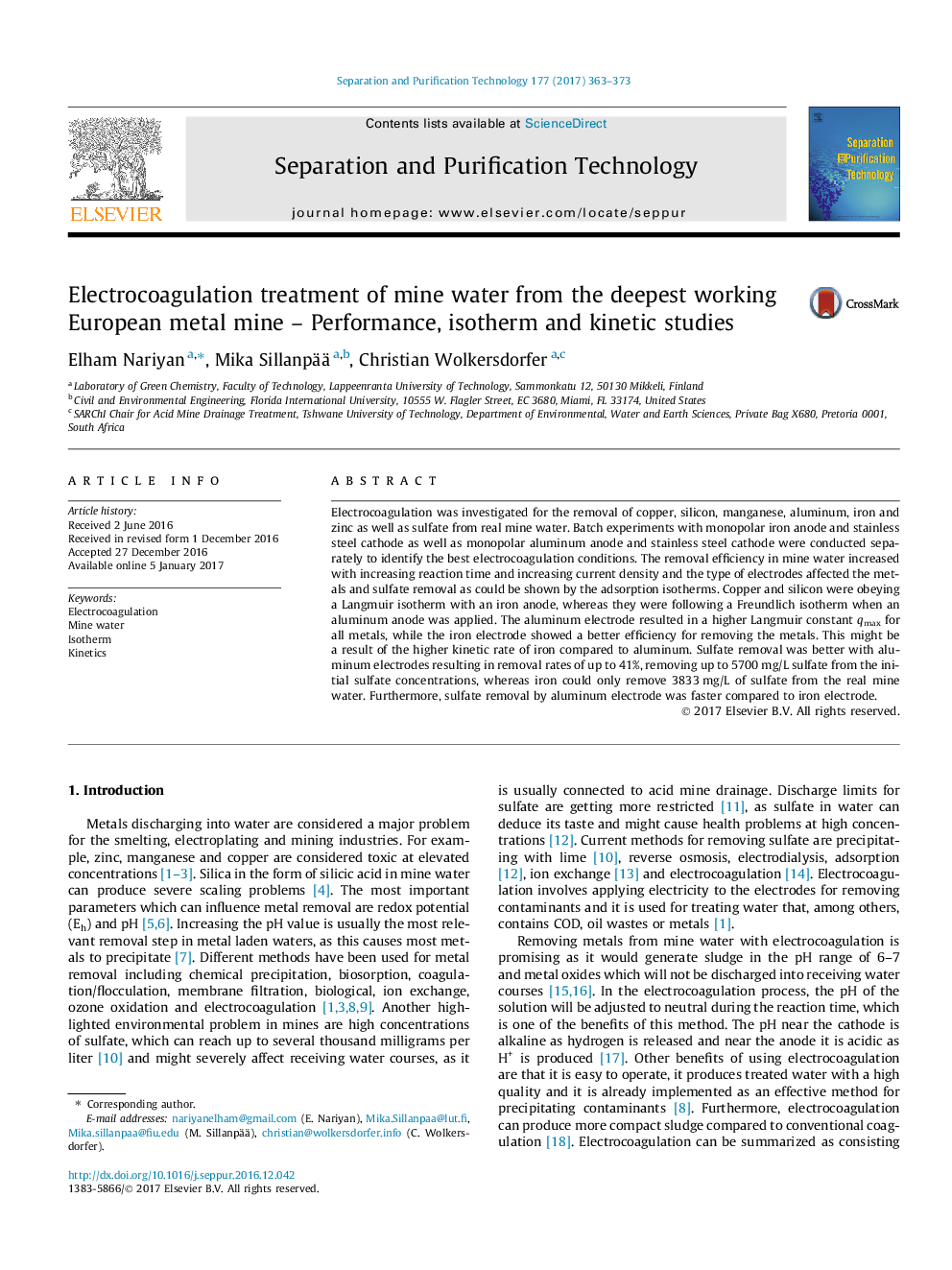| Article ID | Journal | Published Year | Pages | File Type |
|---|---|---|---|---|
| 4990152 | Separation and Purification Technology | 2017 | 11 Pages |
Abstract
Electrocoagulation was investigated for the removal of copper, silicon, manganese, aluminum, iron and zinc as well as sulfate from real mine water. Batch experiments with monopolar iron anode and stainless steel cathode as well as monopolar aluminum anode and stainless steel cathode were conducted separately to identify the best electrocoagulation conditions. The removal efficiency in mine water increased with increasing reaction time and increasing current density and the type of electrodes affected the metals and sulfate removal as could be shown by the adsorption isotherms. Copper and silicon were obeying a Langmuir isotherm with an iron anode, whereas they were following a Freundlich isotherm when an aluminum anode was applied. The aluminum electrode resulted in a higher Langmuir constant qmax for all metals, while the iron electrode showed a better efficiency for removing the metals. This might be a result of the higher kinetic rate of iron compared to aluminum. Sulfate removal was better with aluminum electrodes resulting in removal rates of up to 41%, removing up to 5700Â mg/L sulfate from the initial sulfate concentrations, whereas iron could only remove 3833Â mg/L of sulfate from the real mine water. Furthermore, sulfate removal by aluminum electrode was faster compared to iron electrode.
Related Topics
Physical Sciences and Engineering
Chemical Engineering
Filtration and Separation
Authors
Elham Nariyan, Mika Sillanpää, Christian Wolkersdorfer,
